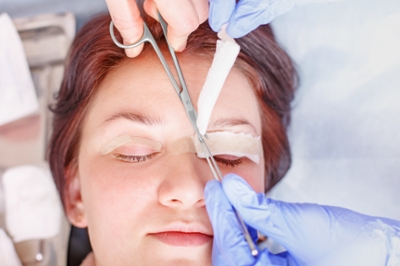
Oculoplastic surgery covers a wide range of needs and options—from surgery after a traumatic injury to medical or cosmetic eyelid lifts. Some procedures can help improve your vision; others simply help you look your best.
Those options to "look your best" are among the most popular elective plastic surgeries in the US, and it's no wonder—getting rid of droopy eyelids or saying goodbye to that extra skin under your eyes can make you feel your best, too.
Whatever you're considering, if it involves the delicate areas around your eyes, you have some decisions to make.
What do you need to know, and where do you begin?
Douglas Marx, MD, an ophthalmologist and researcher who specializes in oculoplastic and reconstructive surgery at the John A. Moran Eye Center at the University of Utah, has some answers.
What types of cosmetic procedures do oculoplastic surgeons do?
One of the most common is called blepharoplasty. There's an upper eyelid blepharoplasty—often called an eye lift—to reduce excess skin and fat in the upper lids, and a lower eyelid blepharoplasty to do the same thing.
Sometimes overlapping skin on the upper lid can block normal vision, so we correct it to provide a more normal field of vision. Other times, the correction on upper or lower lids is cosmetic, as it can help achieve a more youthful, less tired look.
What are the advantages of having an oculoplastic surgeon perform an eyelid lift, or to provide fillers or Botox treatments?
You can find reputable cosmetic surgeons in any city. But oculoplastic surgeons in a university medical setting do both cosmetic and reconstructive surgery, giving them a level of specialization and expertise in facial anatomy to ensure the best results whether you're doing something as simple as Botox or a more complicated procedure. We also have experience working with patients with a variety of specific medical conditions, including glaucoma or dry eyes.
Most procedures, other than Botox, require either local or general anesthesia and may last for several hours, so consider safety and access to a surgical facility.
How do you choose the right surgeon?
Referrals from people who are happy with their results are always a good start. Get a few names and schedule consultations. Be honest about your expectations and ask the doctor to be honest about recommendations, procedures, and outcomes.
Also, perhaps most importantly, ask how many eyelifts (or whatever procedure you're considering) he or she has done. Experience is one of the best indicators of results.
The bottom line: If you're having any work done around your eyes, go to someone who specializes in eyes.